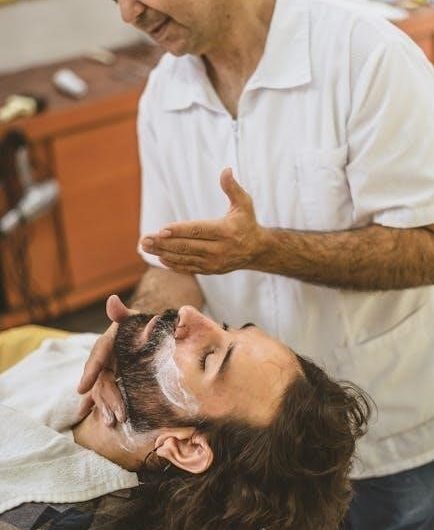Guided tissue regeneration is a dental surgical procedure using barrier membranes to direct new bone growth and periodontal ligament formation around teeth with periodontal defects slowly.
Definition and Purpose
Guided tissue regeneration is defined as a procedure attempting to regenerate lost periodontal structures, including bone, periodontal ligament, and cementum. The American Academy of Periodontology has defined guided tissue regeneration as a technique used in dentistry for periodontal surgery, oral surgery, implant dentistry, and reconstruction of periodontal defects. The purpose of guided tissue regeneration is to direct the growth of new bone and periodontal ligament, and to provide a space for the regeneration of these tissues. This is achieved through the use of barrier membranes, which exclude epithelial and connective tissue cells from the root surface, allowing the preferred cells to grow and regenerate the periodontal tissues. The goal of guided tissue regeneration is to achieve predictable periodontal regeneration, and to improve the overall health and function of the teeth and surrounding tissues. The definition and purpose of guided tissue regeneration are closely related to its applications in dentistry.
History and Development
Guided tissue regeneration has evolved over years with advancements in dental surgical procedures and technologies slowly developing new methods.
Evolution of Guided Tissue Regeneration
The evolution of guided tissue regeneration has been marked by significant advancements in dental technology and surgical procedures.
The use of barrier membranes has become a crucial aspect of this technique, allowing for the direct growth of new bone and periodontal ligament.
Over the years, researchers have developed new methods and materials to improve the effectiveness of guided tissue regeneration.
This has led to the creation of resorbable and non-resorbable barriers, which have enhanced the outcomes of periodontal surgery and implant dentistry.
The evolution of guided tissue regeneration has also been influenced by the development of new biomaterials and tissue engineering techniques.
As a result, guided tissue regeneration has become a reliable and predictable method for achieving periodontal regeneration and improving oral health.
The continuous advancement in this field is expected to lead to even more innovative and effective treatments in the future.
Principles of Guided Tissue Regeneration
Guided tissue regeneration principles involve using barrier membranes to direct bone growth and periodontal ligament formation slowly and naturally around teeth with periodontal defects every time.
Use of Barrier Membranes
The use of barrier membranes is a crucial aspect of guided tissue regeneration, as they play a key role in directing the growth of new bone and periodontal ligament. These membranes are typically made of resorbable or nonresorbable materials and are placed over the defect site to exclude epithelial and connective tissue cells. The membrane acts as a barrier, allowing only the desired cells to grow into the defect site, and providing a space for new bone and periodontal ligament to form. The use of barrier membranes has been shown to be effective in promoting periodontal regeneration and can be used in a variety of clinical situations, including periodontal surgery and implant dentistry. The choice of membrane material and design can affect the outcome of the procedure, and careful consideration must be given to these factors when planning treatment. Membranes are used to guide tissue growth.
Applications of Guided Tissue Regeneration
Guided tissue regeneration is used in periodontal therapy and implant dentistry procedures slowly and effectively.
Periodontal Therapy and Implant Dentistry
Guided tissue regeneration is a technique used in periodontal therapy and implant dentistry to promote the growth of new bone and periodontal ligament. This technique is used to treat periodontal defects and to reconstruct the periodontal attachment. The use of barrier membranes in guided tissue regeneration allows for the exclusion of epithelial and connective tissue cells from the root surface, providing a space for the growth of new bone and periodontal ligament. Guided tissue regeneration is a promising method for achieving predictable periodontal regeneration and is used in a variety of dental surgical procedures, including periodontal surgery, oral surgery, and implant dentistry. The goal of guided tissue regeneration is to reconstruct the periodontal attachment and to restore the health and function of the periodontal tissues. This technique has been shown to be effective in promoting periodontal regeneration and improving the outcomes of dental surgical procedures.
Benefits and Advantages
Guided tissue regeneration offers predictable periodontal regeneration and improved treatment outcomes slowly and effectively every time with minimal complications and risks involved always.
Predictable Periodontal Regeneration
Guided tissue regeneration allows for predictable periodontal regeneration by providing a space for new tissue growth and inhibiting the growth of unwanted cells. This is achieved through the use of barrier membranes, which direct the growth of new bone and periodontal ligament. The goal of guided tissue regeneration is to reconstruct the periodontal attachment and improve the overall health of the periodontal tissue. By using this technique, dentists can achieve consistent and reliable results, making it a valuable tool in the treatment of periodontal disease. The use of guided tissue regeneration has been shown to be effective in promoting periodontal regeneration and improving treatment outcomes, making it a popular choice among dentists and patients alike. Overall, guided tissue regeneration is a powerful technique for achieving predictable periodontal regeneration and improving oral health. Guided tissue regeneration is a method that has been widely used.
Guided tissue regeneration is a valuable dental technique providing successful treatment outcomes slowly and effectively every time with proper use of barrier membranes and techniques always.
Guided Tissue Regeneration in Dentistry
Guided tissue regeneration has become a significant aspect of dentistry, particularly in the field of periodontal surgery and implant dentistry. The use of barrier membranes has enabled dentists to direct the growth of new bone and periodontal ligament, resulting in successful treatment outcomes. This technique has been widely accepted and is now considered a valuable tool in the reconstruction of periodontal attachment. The application of guided tissue regeneration in dentistry has expanded to include various procedures, such as ridge augmentation and bone regenerative procedures. With the advancement of technology and materials, guided tissue regeneration continues to evolve, providing dentists with a reliable method to achieve predictable periodontal regeneration. The incorporation of guided tissue regeneration in dental practices has improved patient care and has become an essential component of modern dentistry, offering new possibilities for periodontal therapy and oral reconstruction.
 twin falls tv guide
twin falls tv guide  the cartoon guide to chemistry
the cartoon guide to chemistry  marmot guides down hooded jacket
marmot guides down hooded jacket  runecrafting guide osrs f2p
runecrafting guide osrs f2p  alchemy guide black desert
alchemy guide black desert  guido bugni helena mt
guido bugni helena mt  gray’s manual of botany
gray’s manual of botany  waterdrop x series undersink reverse osmosis system x16 manual
waterdrop x series undersink reverse osmosis system x16 manual  kia service manual pdf free download
kia service manual pdf free download